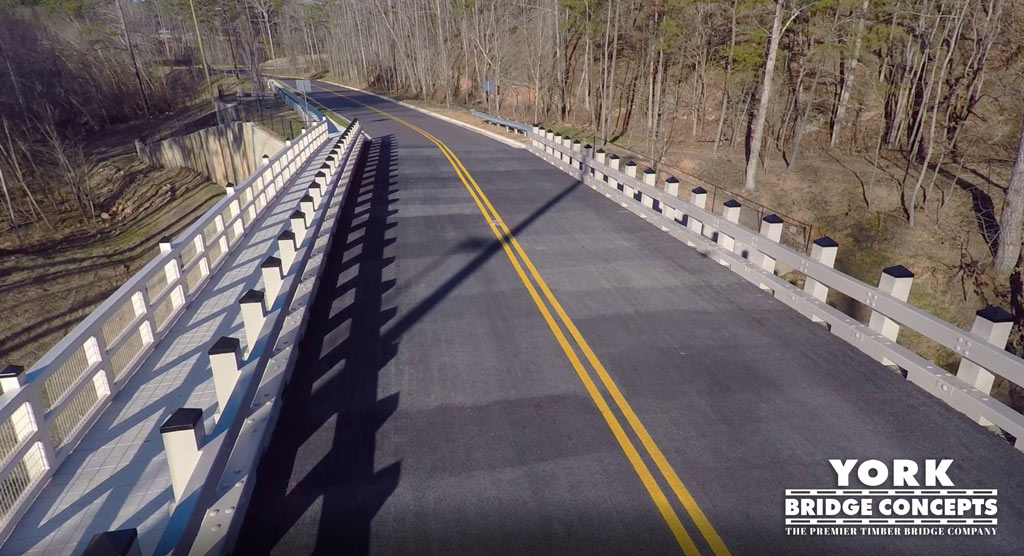A Bridge to Belonging: The Story of the Inspired Living Bridge
York Bridge Concepts (YBC), a leading name in timber bridge construction, in collaboration with Baxter Construction, created a transformative infrastructure solution for the Inspired Living retirement community in Alpharetta, Georgia. This unique timber vehicular bridge, which spans 117 feet and rises 40 feet above the ground, plays a vital role in providing access to the community while preserving the natural environment.
For Inspired Living, a forward-thinking retirement community, this bridge serves as a literal and symbolic gateway. It is a welcoming structure that adds to the charm and architectural integrity of the area. The challenge for this project lay in preserving the natural water flow and mitigating potential environmental impacts while still allowing vehicular access to the community.
Thanks to the innovative vision of YBC and their expertise in timber bridge construction, this project became a testament to sustainable design. The bridge not only meets the community’s functional needs but also accentuates its visual appeal, helping Inspired Living make a lasting first impression on residents and visitors alike.
Specifications
- Vehicular Width:
- 28’ (26’ 5” clear)
- Pedestrian Width:
- 6’ (4’ 8” clear)
- Length:
- 117’ 6”
- Height:
- 40’ from ground
- Capacity:
- HS 20-44
- Construction:
- Ground Up
- Span Type:
- Multiple Span
- Span Lengths:
- (1) 49', (2) 34’
- Material:
- CCA/CA-C Treated Southern Yellow Pine
- Foundation:
- Timber Piles & Abutments (Acrylic/Polymer Coated where exposed)
- Stringers:
- SYP Glulam Stringers (Acrylic/Polymer Coated where exposed)
- Vehicular Deck System:
- 5 ½” Double Timber Deck
- Pedestrian Deck System:
- 1-½” Timber Deck
- Guard Rail:
- Decero™ Classic Design Series
- Handrail:
- Decero™ Scenic Wire Mesh Design Series
- Crossing:
- Flood Plain
– Jack Hinkle, Baxter Construction"Baxter Construction chose York Bridge Concepts because of their outstanding reputation. Even though different materials were considered for the bridge, York Bridge Concepts was able to provide a cost effective crossing solution that was attractive and blended well with the natural environment. Their field teams were easy to work with, and followed through well with each step of the process. I personally admired the clean design and was impressed by the skills of the construction crew that made a challenging build look almost simple. We were able to choose custom coatings, and enjoyed having more style options with a timber bridge than we would with other materials.
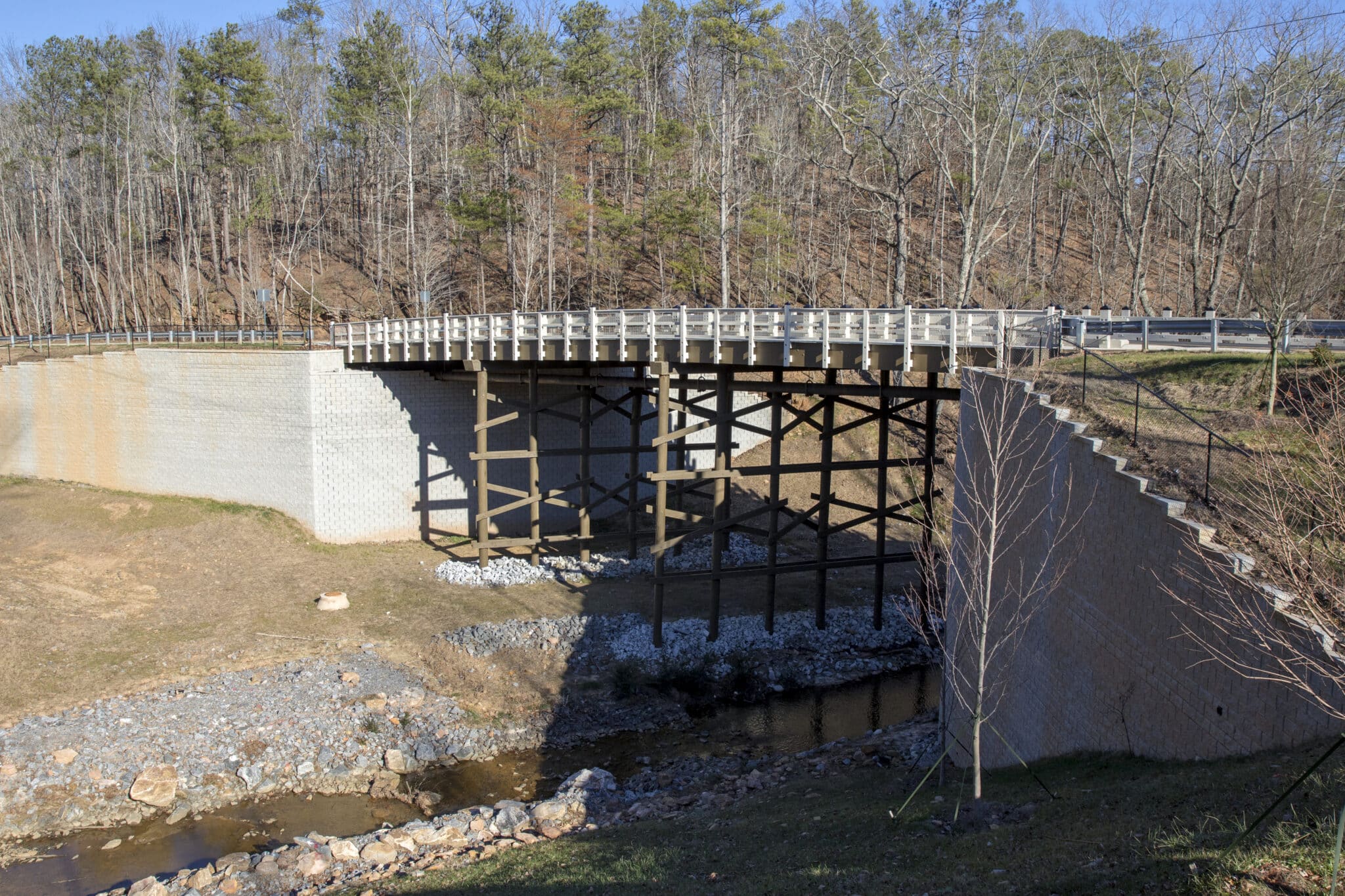
Challenges and the Need for a Timber Vehicular Bridge
When Inspired Living first explored developing their retirement community, they faced a considerable challenge: how to provide vehicular access to the property without disrupting the natural environment surrounding a critical water stream. The land was not only visually stunning but ecologically sensitive, with regulations in place to protect the local flora and fauna.
The standard approach to such developments typically involves the construction of a culvert system. A culvert would channel the stream underground, allowing vehicles to pass over a paved road. However, this solution posed significant problems:
- Environmental Impact: Installing a culvert would disrupt the stream’s natural flow, impacting local ecosystems and wildlife dependent on the waterway.
- Costly Mitigation: Due to the area’s environmental sensitivity, the project would have required extensive and expensive environmental mitigation measures, adding unnecessary costs to the development.
- Long-term Maintenance: Culverts can be prone to clogging, erosion, and eventual failure, requiring continuous maintenance and repair, which would lead to higher long-term operational costs for Inspired Living.
The need for a creative solution was clear. Inspired Living, together with Baxter Construction, sought alternatives that would allow them to move forward without sacrificing environmental stewardship or burdening the project with excessive costs.
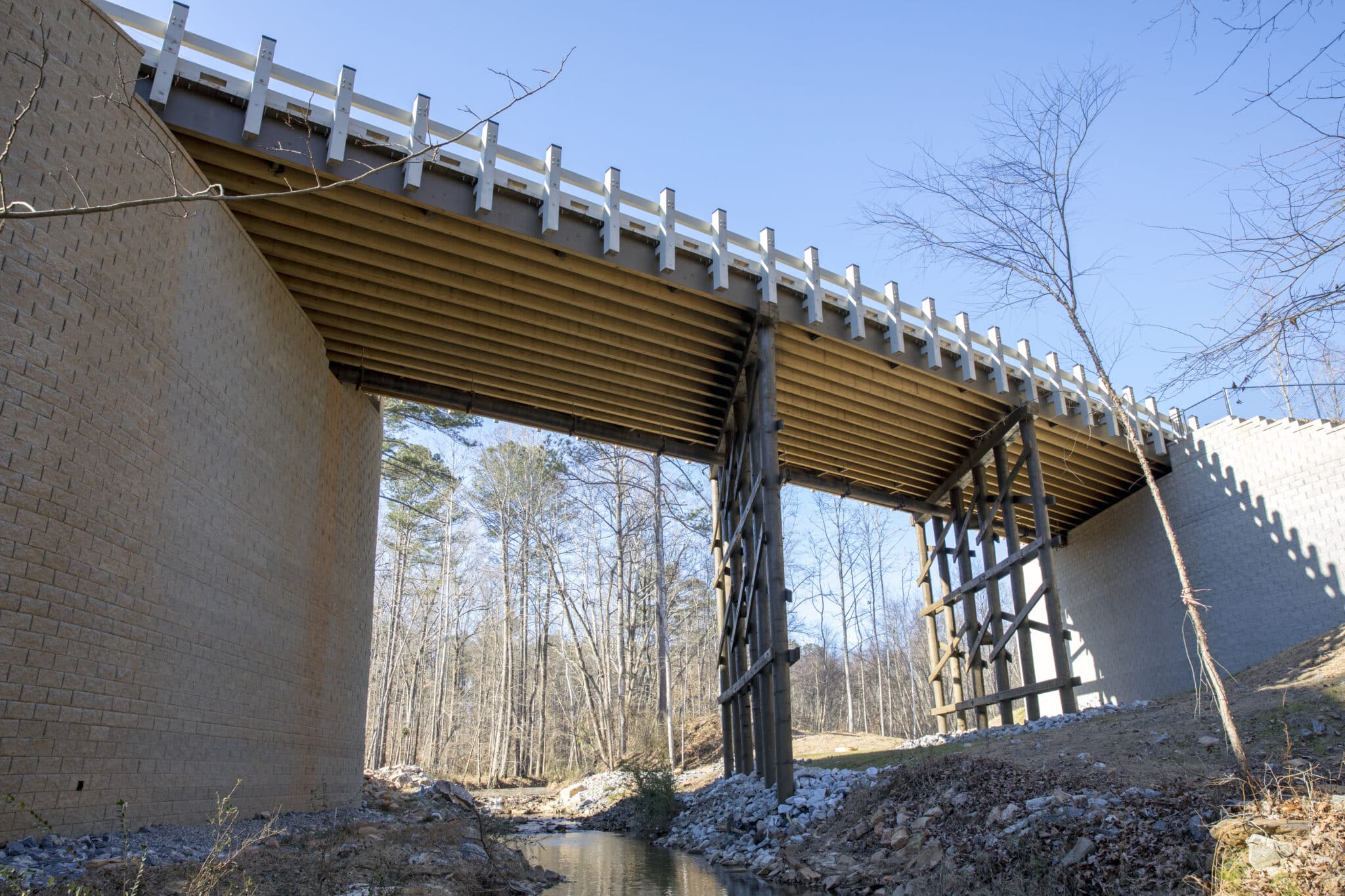
The need for a creative solution was clear. Inspired Living, together with Baxter Construction, sought alternatives that would allow them to move forward without sacrificing environmental stewardship or burdening the project with excessive costs.
That’s where York Bridge Concepts came in. With decades of experience in timber bridge construction and a strong commitment to sustainability, YBC was uniquely qualified to propose a solution that would meet all the requirements. A timber vehicular bridge could span the stream without impeding its flow or requiring extensive environmental mitigation. Additionally, a timber bridge would blend seamlessly with the natural surroundings, enhancing the overall aesthetics of the community while maintaining the environmental integrity of the site.
YBC proposed the construction of a timber bridge that could:
- Span the waterway without altering its natural course or requiring culvert installation.
- Minimize environmental impact by using natural, sustainable materials and construction techniques that preserved the area’s ecosystem.
- Avoid costly mitigation measures by designing the bridge to allow maximum hydraulic flow, preventing flooding or blockages.
- Create a stunning architectural feature that would become an iconic entrance for the Inspired Living community.
This approach proved to be the perfect balance of form and function, meeting all the needs of the community while staying within budget and environmental guidelines.
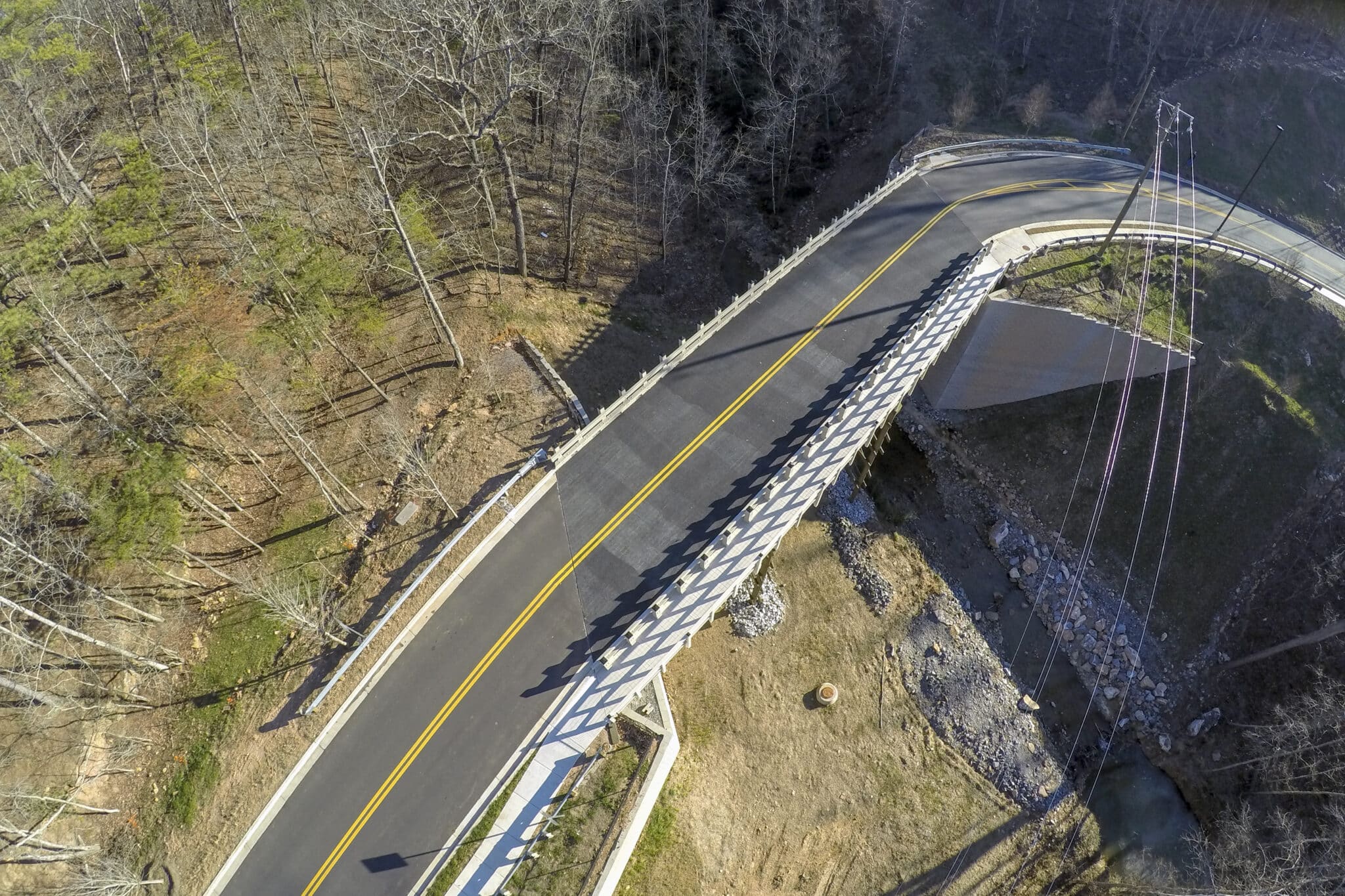
The York Bridge Concepts' Solution For The Inspired Living Community
York Bridge Concepts has a long history of creating innovative timber bridge solutions that marry form and function. Their reputation as pioneers in timber bridge construction stems from their ability to craft sustainable, cost-effective, and visually appealing structures that meet the diverse needs of developers, municipalities, and private landowners.
For the Inspired Living project, YBC’s timber vehicular bridge was an ideal solution. But what sets a timber bridge apart from traditional materials like steel or concrete?
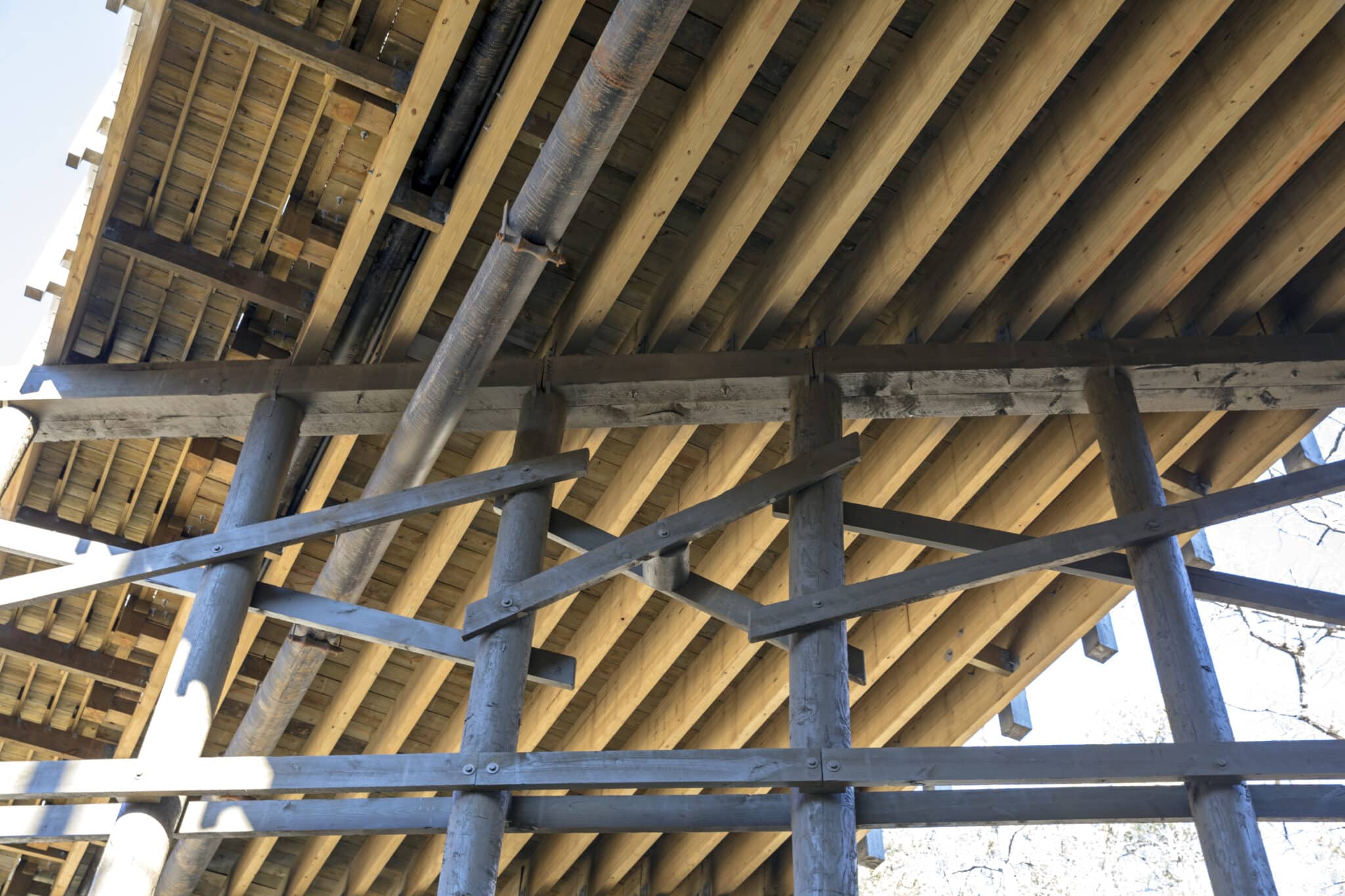
Sustainability
Timber is one of the most environmentally friendly building materials available. Unlike steel or concrete, which require energy-intensive processes to produce, timber is a renewable resource. Modern forestry practices ensure that timber used in construction comes from sustainably managed forests, where for every tree harvested, several more are planted. This makes timber a naturally carbon-neutral material, as trees absorb carbon dioxide throughout their growth cycle.
Lower Environmental Impact
Timber bridges, when properly designed and constructed, have a much lower impact on the surrounding environment. They don’t require the heavy machinery and earth-moving equipment that is often necessary for steel or concrete construction. This reduces the overall disturbance to the land and ensures that the project preserves as much of the natural environment as possible.
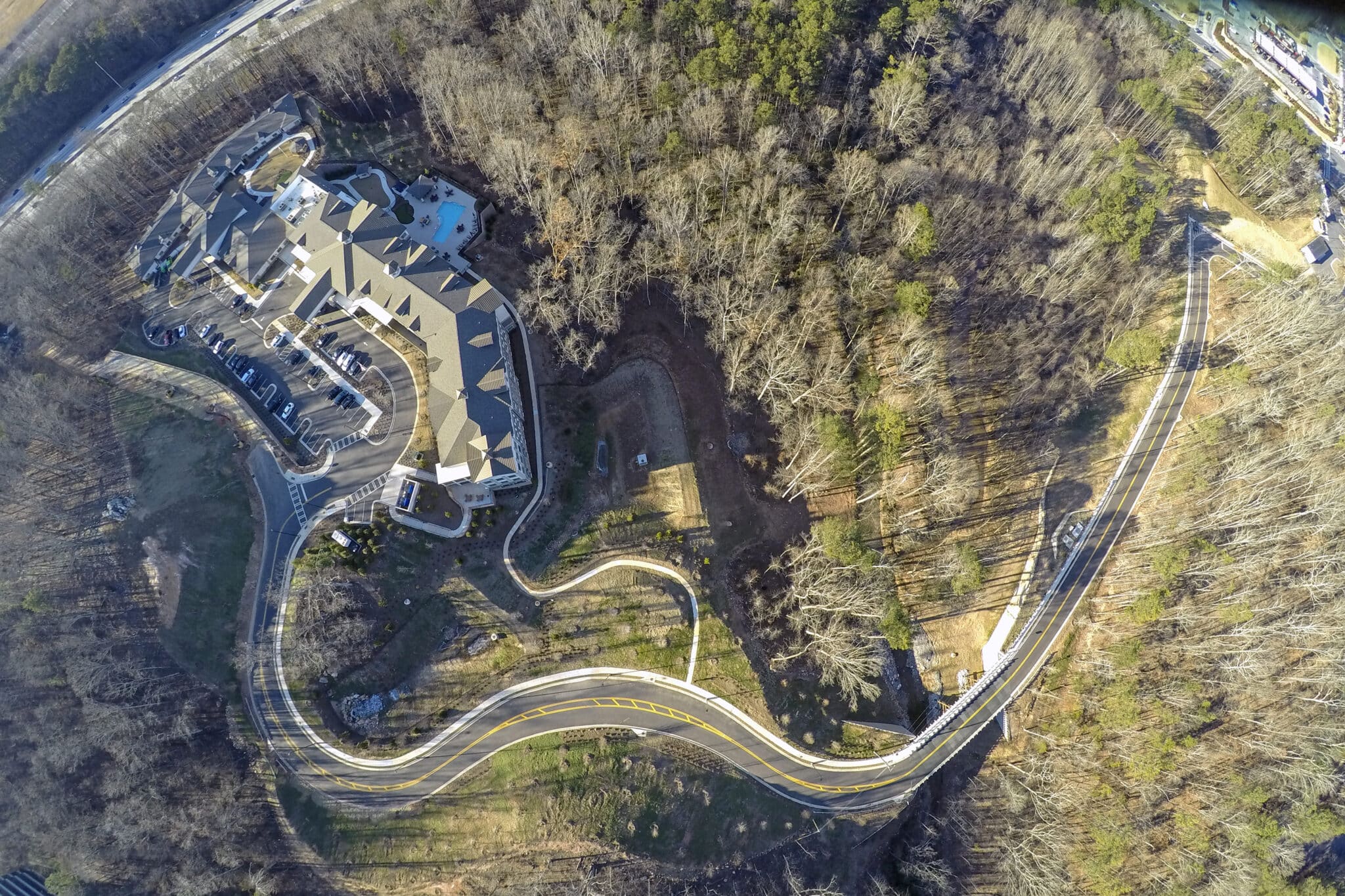
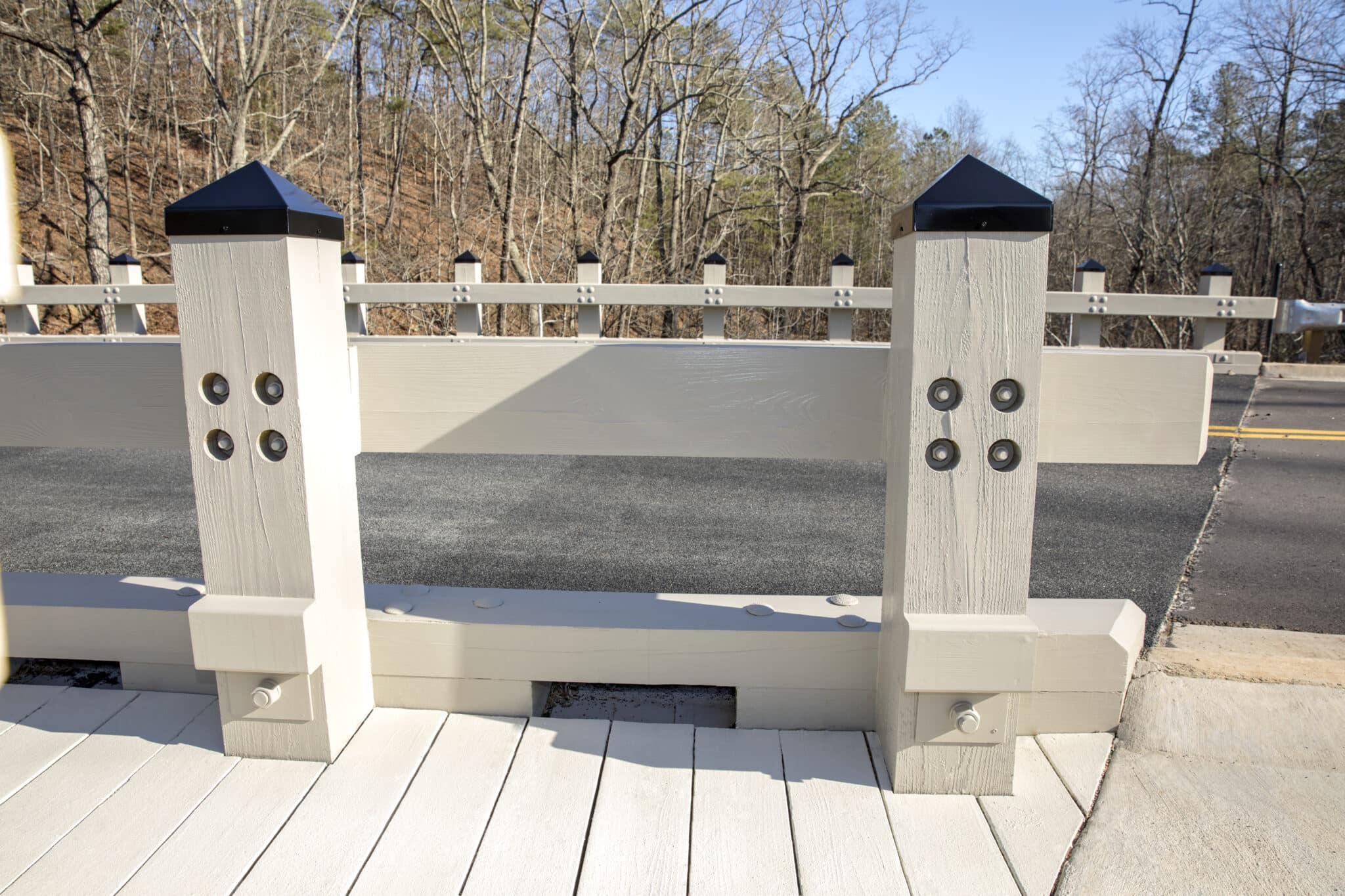
Aesthetic Appeal
Timber bridges have a timeless, natural beauty that can’t be matched by industrial materials like steel or concrete. The warm, organic texture of wood complements natural surroundings, making timber bridges ideal for projects in environmentally sensitive or scenic areas.
Durability and Longevity
Advances in timber treatment and construction techniques have significantly improved the durability of timber bridges. When properly maintained, timber bridges can last as long as their steel or concrete counterparts, and in some cases, they can even outlast them due to their flexibility and natural resilience to environmental stress.
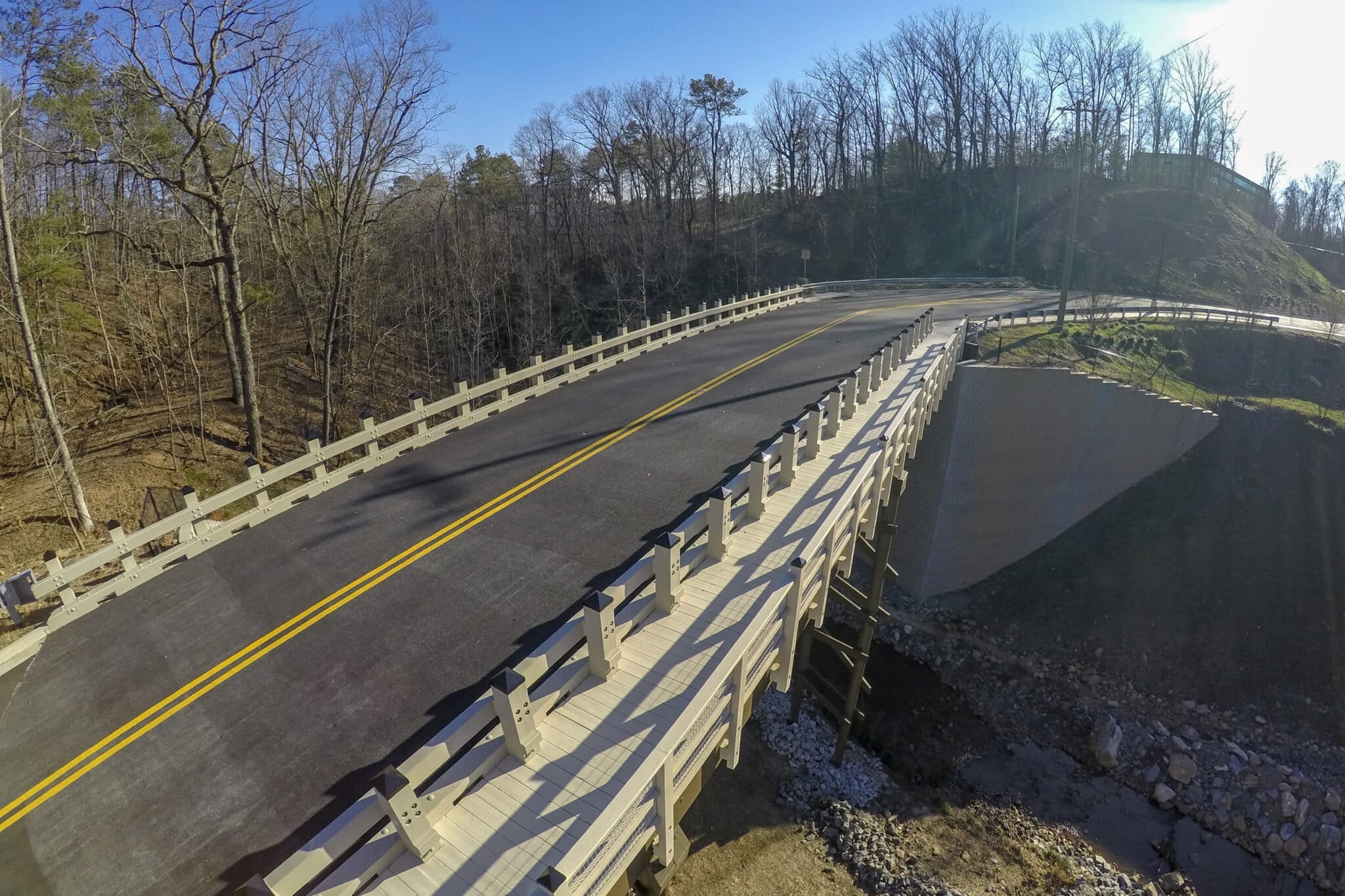
For this project, YBC designed a timber vehicular bridge that met all of these criteria. The bridge’s 117-foot span and 40-foot elevation allowed it to cross the stream with ease, ensuring the preservation of the waterway and surrounding ecosystems. YBC’s engineers carefully calculated the hydraulic flow requirements, ensuring that the bridge’s design would not impede water movement or cause any flooding during periods of heavy rain.
Additionally, the timber used in the bridge’s construction was carefully sourced to ensure sustainability. YBC’s commitment to green building practices meant that every aspect of the project—from the materials used to the construction methods employed—was aligned with environmental best practices. This not only benefited the community and the environment but also saved Inspired Living from incurring the costly environmental mitigation measures that would have been necessary with a traditional culvert system.
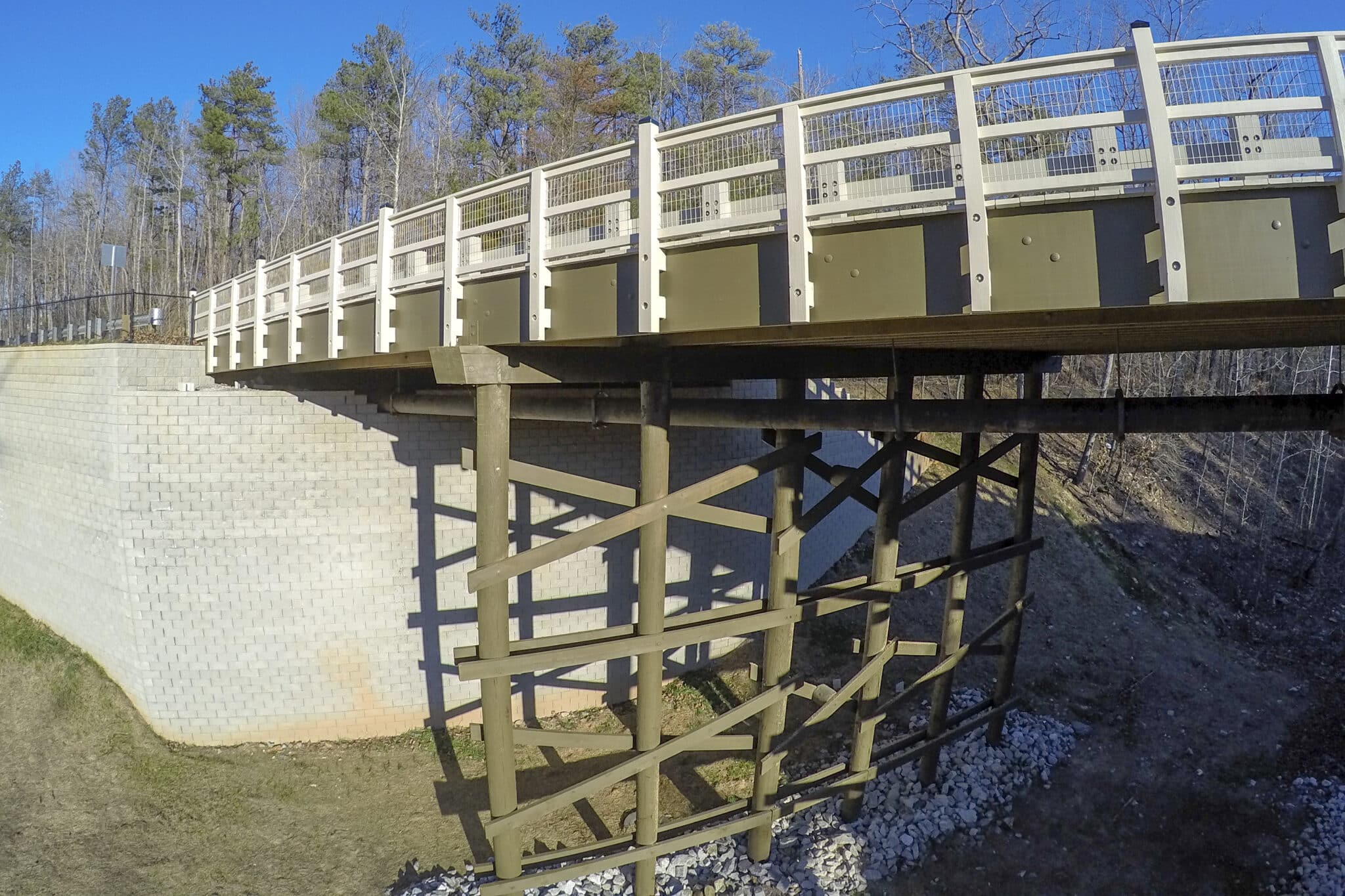
Design and Architecture of the Inspired Living Timber Vehicular Bridge
The Inspired Living Timber Vehicular Bridge stands out not just for its function but for its striking design and architectural presence. The bridge spans an impressive 117 feet and rises 40 feet from the ground, making it a significant visual landmark for the community.
At the heart of its design is the idea of seamlessly integrating the structure into the natural landscape, ensuring that the bridge not only serves its intended purpose but also enhances the beauty of the surrounding area.
-
Engineering Considerations: One of the most critical aspects of the bridge’s design was ensuring that it could support vehicular traffic while maintaining structural integrity over time. YBC employed state-of-the-art engineering techniques to ensure the bridge’s durability and stability. The timber used was treated to withstand the elements, and the bridge was designed to handle both everyday vehicular traffic and potential environmental stresses such as wind and heavy rain.
-
Hydraulic Flow Optimization: The stream that runs beneath the bridge required careful attention to hydraulic flow. YBC’s design ensured that the bridge would allow maximum water flow, preventing blockages or flooding during periods of heavy rain. This was achieved through careful engineering that took into account the flow patterns of the stream and the natural landscape.
-
Legacy Trim Level: To further enhance the visual appeal of the bridge, YBC incorporated their Legacy Trim Level design. This trim level emphasizes attention to detail, with intricate craftsmanship that elevates the bridge from a functional structure to a work of art. The Legacy Trim Level was chosen to align with the architectural theme of the Inspired Living community, creating a cohesive aesthetic that extends from the community’s buildings to its infrastructure.
-
Materials and Craftsmanship: The materials used in the construction of the bridge were carefully selected to ensure both sustainability and durability. The timber was sourced from sustainable forests, and the construction process was designed to minimize waste and environmental impact. YBC’s team of skilled craftsmen brought the design to life, ensuring that every aspect of the bridge was constructed with precision and care.
In addition to its functional and environmental benefits, the Inspired Living Timber Vehicular Bridge has become a defining feature of the community. Its design reflects the values of Inspired Living, emphasizing sustainability, beauty, and a connection to the natural world. This alignment between the bridge’s design and the community’s architectural theme creates a harmonious atmosphere that enhances the overall experience for residents and visitors alike.
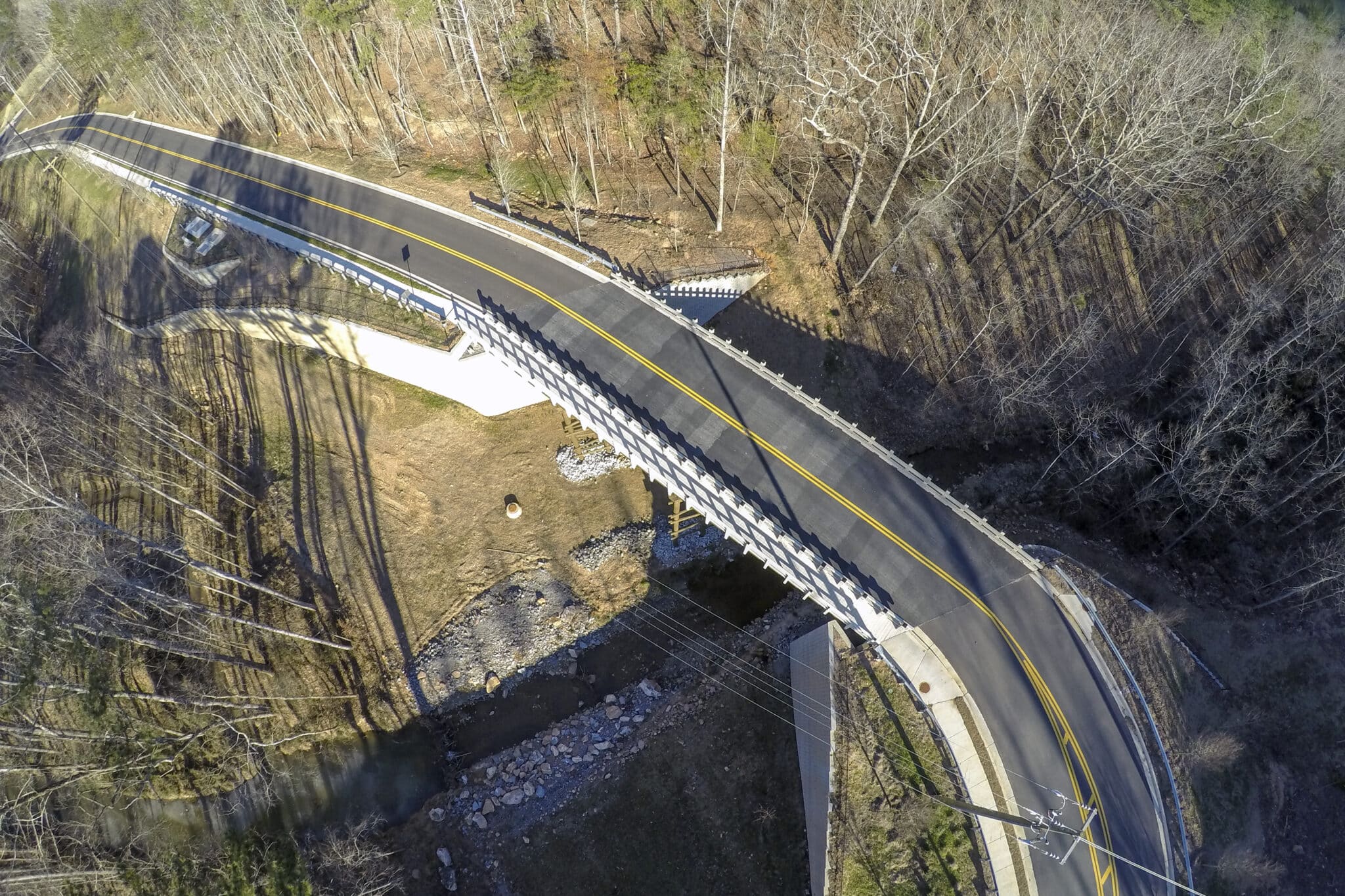
Collaboration Between York Bridge Concepts & Baxter Construction
The success of the Inspired Living Timber Vehicular Bridge is a testament to the collaborative efforts of York Bridge Concepts and Baxter Construction. From the earliest stages of the project, these two companies worked closely together to ensure that the bridge met all of the client’s needs while adhering to budgetary and environmental constraints.
-
Initial Planning and Design: The collaboration began with a series of planning meetings in which YBC and Baxter Construction assessed the site and discussed potential solutions to the environmental and logistical challenges posed by the stream and the need for vehicular access. Together, they considered various design options, ultimately concluding that a timber bridge was the best choice due to its sustainability, cost-effectiveness, and aesthetic appeal.
-
Communication and Coordination: Throughout the design and construction process, YBC and Baxter Construction maintained open lines of communication, ensuring that both companies were aligned in terms of goals, timelines, and expectations. This close coordination was essential to the success of the project, as it allowed both companies to address any challenges that arose during construction quickly and efficiently.
-
Problem-Solving and Innovation: One of the key challenges the team faced during the construction process was ensuring that the bridge’s foundation would be stable despite the fluctuating water levels of the stream. YBC’s engineers worked closely with Baxter Construction’s team to develop an innovative foundation design that would withstand the varying water levels while still maintaining the natural flow of the stream. This kind of problem-solving was only possible through the strong collaboration between the two companies.
-
On-Time and On-Budget Delivery: Thanks to the close partnership between YBC and Baxter Construction, the project was completed on time and within the agreed-upon budget. This was no small feat, given the environmental sensitivities of the site and the complexity of the bridge’s design. The collaboration between these two companies ensured that the project stayed on track, even in the face of potential obstacles.
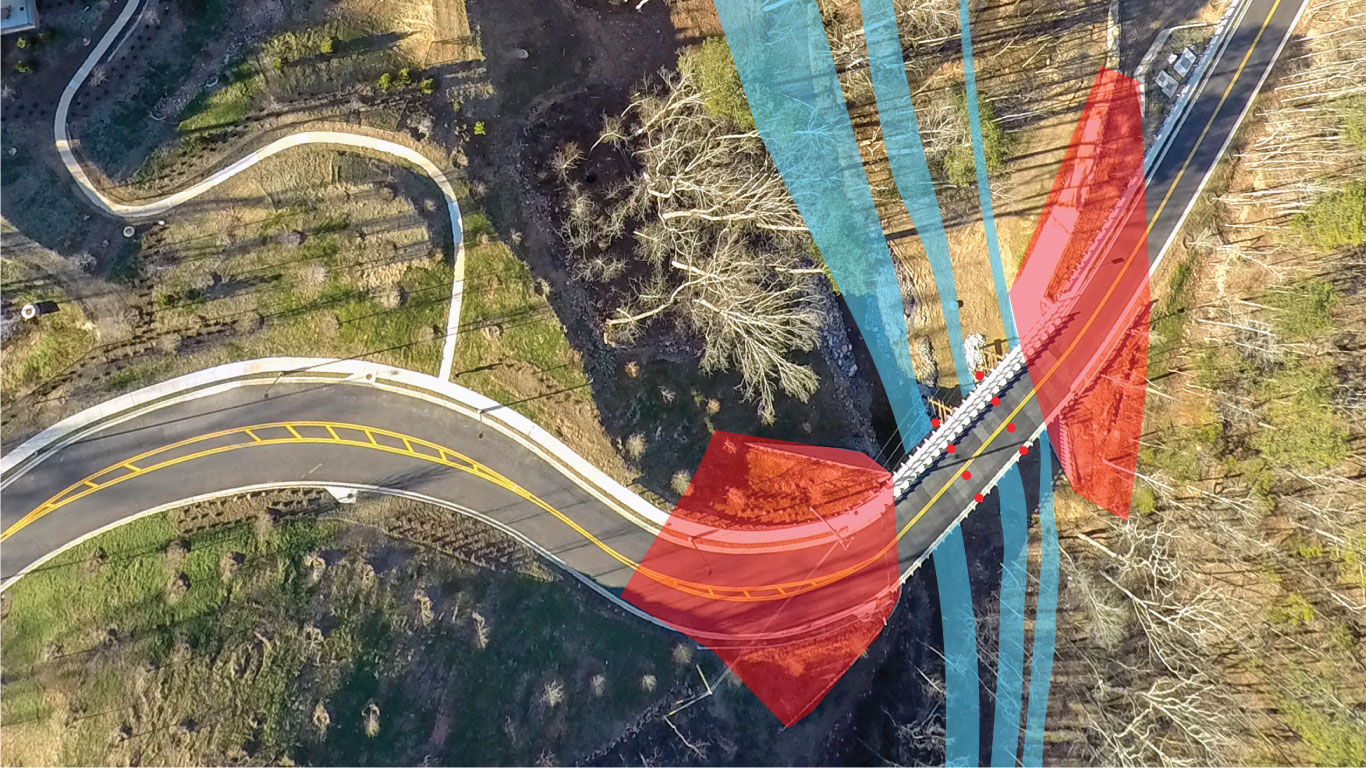
Environmental Mitigation: A Major Challenge Avoided
Environmental mitigation is often a costly and time-consuming requirement in construction projects, especially those involving waterways or environmentally sensitive areas. In the case of Inspired Living, building a traditional culvert system to allow vehicles to pass over the stream would have necessitated significant environmental mitigation efforts. These efforts would have included diverting the stream, altering the landscape, and potentially impacting local wildlife habitats.
York Bridge Concepts’ timber bridge solution avoided the need for these costly mitigation measures. By designing a bridge that spanned the stream rather than altering its course, YBC was able to preserve the natural flow of the waterway and protect the surrounding environment.
-
Maximizing Hydraulic Flow: One of the key environmental concerns was ensuring that the bridge would not impede the natural flow of the stream, especially during periods of heavy rain. YBC’s engineers carefully calculated the hydraulic requirements of the stream and designed the bridge to allow maximum water flow. This not only protected the stream from blockages or flooding but also ensured that the local ecosystem remained undisturbed.
-
Preserving Local Wildlife: The area surrounding the stream is home to a variety of wildlife, including birds, fish, and other animals that depend on the waterway for survival. By designing a bridge that minimized disruption to the natural environment, YBC helped protect these habitats and ensure that local wildlife could continue to thrive.
-
Long-Term Environmental Benefits: In addition to avoiding the immediate environmental impacts of construction, the timber bridge offers long-term environmental benefits. Timber, as a renewable resource, has a much smaller carbon footprint than steel or concrete, making it a more sustainable choice for infrastructure projects. Over time, the timber bridge will continue to provide environmental benefits by reducing the community’s overall impact on the environment.
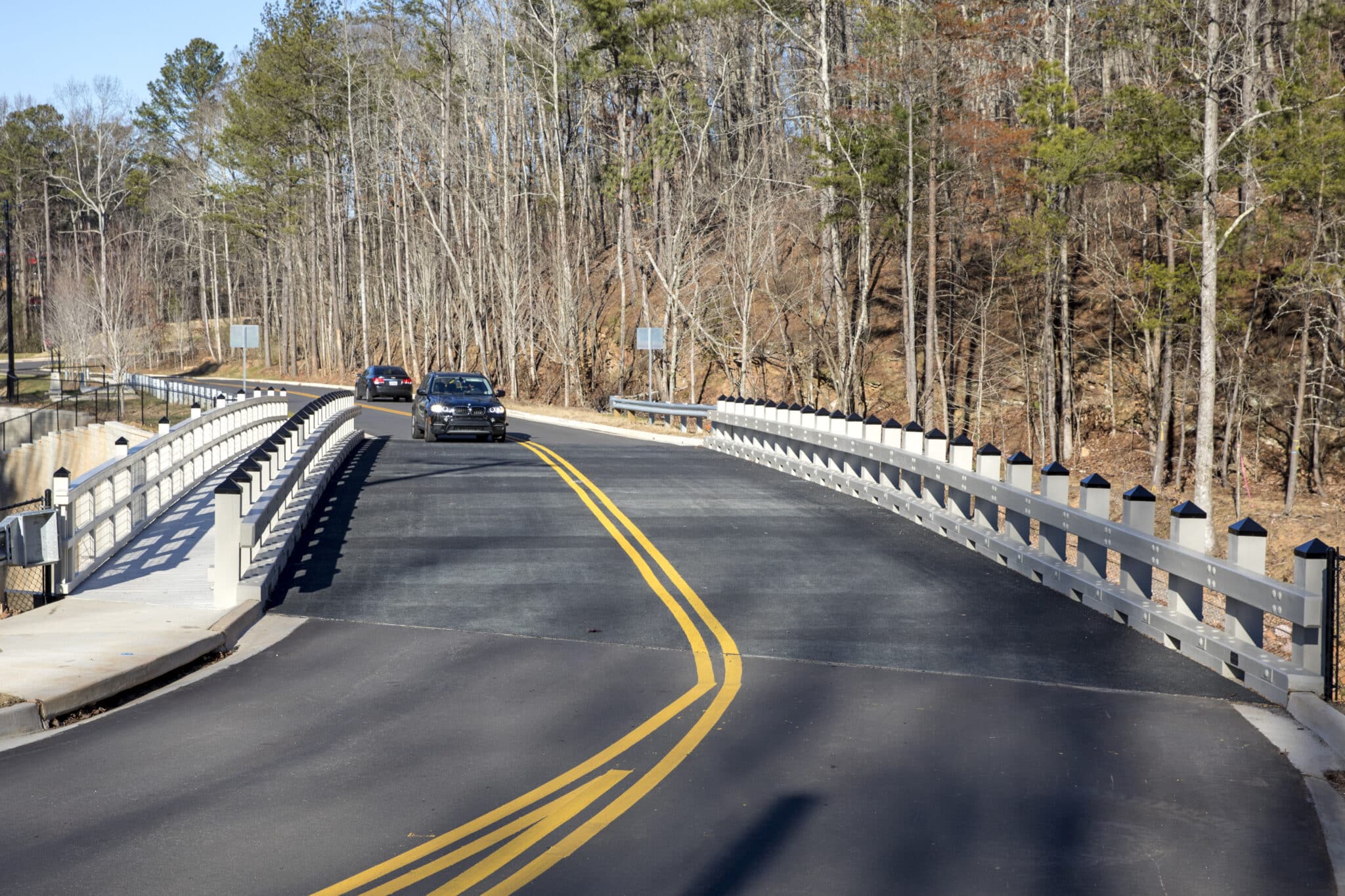
Timber Bridges and Sustainability: Long-Term Benefits
Timber bridges are gaining popularity in modern infrastructure projects, and for good reason. They offer a range of sustainability benefits that make them an ideal choice for environmentally conscious developers and communities.
-
Carbon Sequestration: Timber is a natural carbon sink, meaning that trees absorb carbon dioxide from the atmosphere as they grow. When timber is used in construction, it continues to store that carbon, helping to reduce the overall carbon footprint of the project. This makes timber bridges a more sustainable choice than steel or concrete, which require significant energy to produce.
-
Reduced Energy Use in Construction: Building with timber generally requires less energy than building with steel or concrete. Timber is lighter and easier to work with, reducing the need for heavy machinery and energy-intensive processes. This results in a lower overall environmental impact during the construction phase.
-
Sustainable Forestry Practices: Modern timber bridges are built using wood from sustainably managed forests, where trees are harvested responsibly and new trees are planted to replace those that are cut down. This ensures that timber remains a renewable resource that can continue to be used in construction for generations to come.
-
Long-Term Durability: Advances in timber treatment and construction techniques have made timber bridges more durable and resilient than ever before. With proper maintenance, timber bridges can last for decades, making them a viable long-term solution for infrastructure projects.
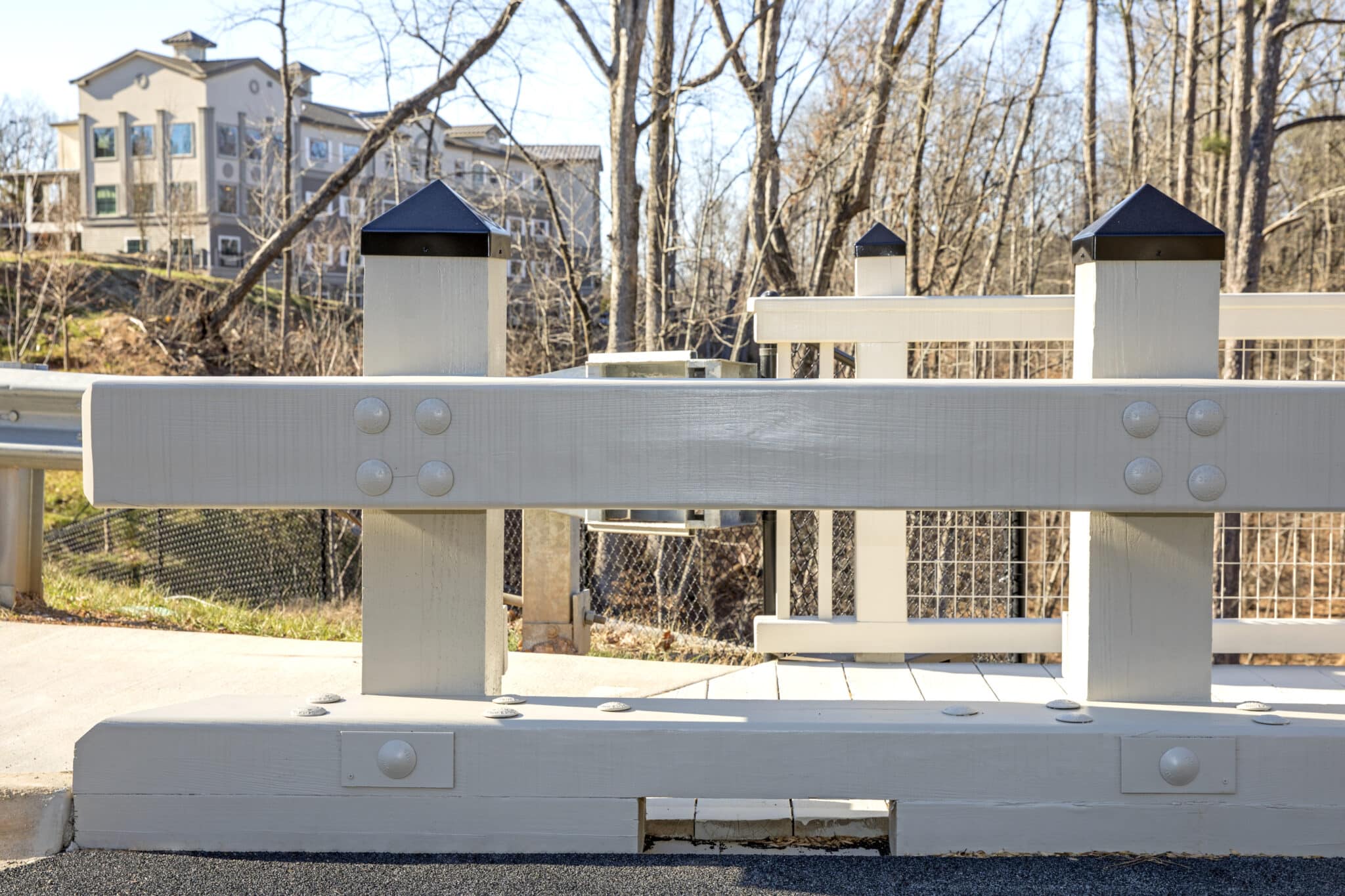
Aesthetic Integration: Enhancing Community Appeal For Inspired Living Residents
One of the key goals of the Inspired Living Timber Vehicular Bridge project was to create a structure that not only served a functional purpose but also enhanced the overall aesthetic of the community. Inspired Living, as a high-end retirement community, places a strong emphasis on creating a welcoming and beautiful environment for its residents, and the bridge plays a central role in achieving that goal.
-
Architectural Consistency: The design of the bridge was carefully crafted to align with the architectural theme of the Inspired Living community. YBC’s Legacy Trim Level was chosen for the project, which emphasizes high-quality craftsmanship and intricate detailing. This trim level adds a touch of elegance to the bridge, ensuring that it complements the community’s overall design aesthetic.
-
Natural Materials: The use of timber in the construction of the bridge was not only a practical choice but also an aesthetic one. Timber’s natural warmth and texture make it an ideal material for blending into the surrounding landscape. The bridge’s design was intended to reflect the natural beauty of the area, creating a seamless connection between the built environment and the natural world.
-
A Welcoming Gateway: As the entrance to the Inspired Living community, the timber bridge serves as a welcoming gateway for residents and visitors alike. Its impressive 117-foot span and 40-foot elevation give it a sense of grandeur, while its timber construction creates a sense of warmth and approachability. The bridge is more than just a functional structure—it is a defining feature of the community that enhances the overall experience for everyone who visits.
-
Community Feedback: Since its completion, the bridge has received positive feedback from both residents and visitors. Many have commented on how the bridge enhances the overall atmosphere of the community, creating a sense of connection to the natural environment while also providing a safe and reliable means of access. For Inspired Living, the bridge has become a symbol of the community’s commitment to sustainability, beauty, and quality of life.
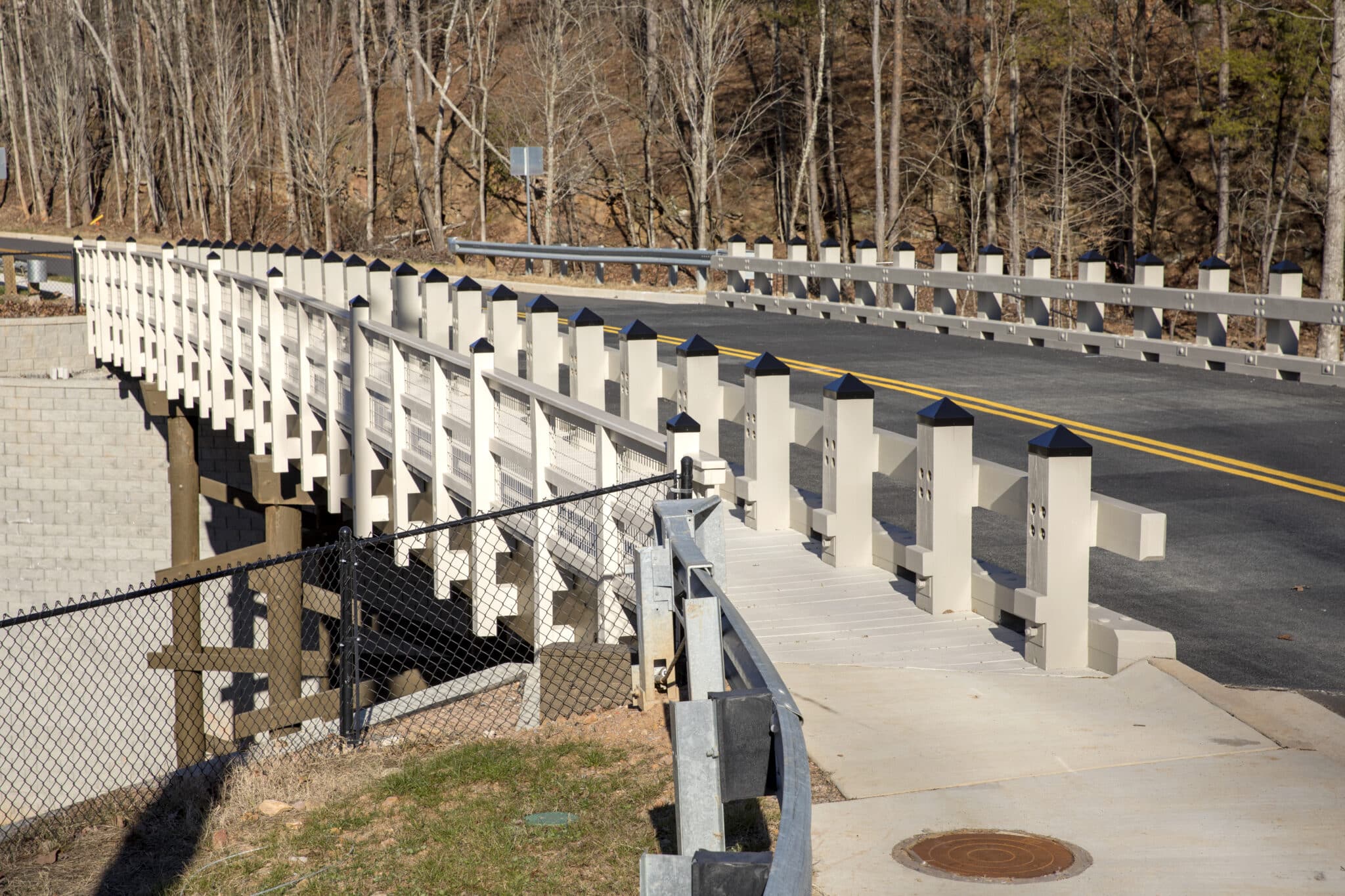
Case Study Highlights: A Model for Future Projects
The Inspired Living Timber Vehicular Bridge project serves as a model for future developments facing similar environmental and logistical challenges. By opting for a timber bridge solution, York Bridge Concepts and Baxter Construction were able to deliver a project that met all of the client’s needs while avoiding costly and time-consuming environmental mitigation measures.
The key takeaways from this case study include:
- Innovative Design Solutions: YBC’s timber bridge design allowed for the preservation of the natural environment, avoiding the need for culvert installation and stream diversion.
- Cost-Effective Construction: The use of timber reduced both the initial construction costs and the long-term maintenance costs, making the bridge a cost-effective solution for the community.
- Sustainability and Aesthetic Value: The timber bridge not only provided a functional solution but also enhanced the overall aesthetic of the Inspired Living community, creating a beautiful and welcoming gateway for residents and visitors.
This project demonstrates how timber bridges can be a viable solution for environmentally sensitive areas, offering long-term sustainability benefits while also providing a cost-effective and visually appealing infrastructure solution.
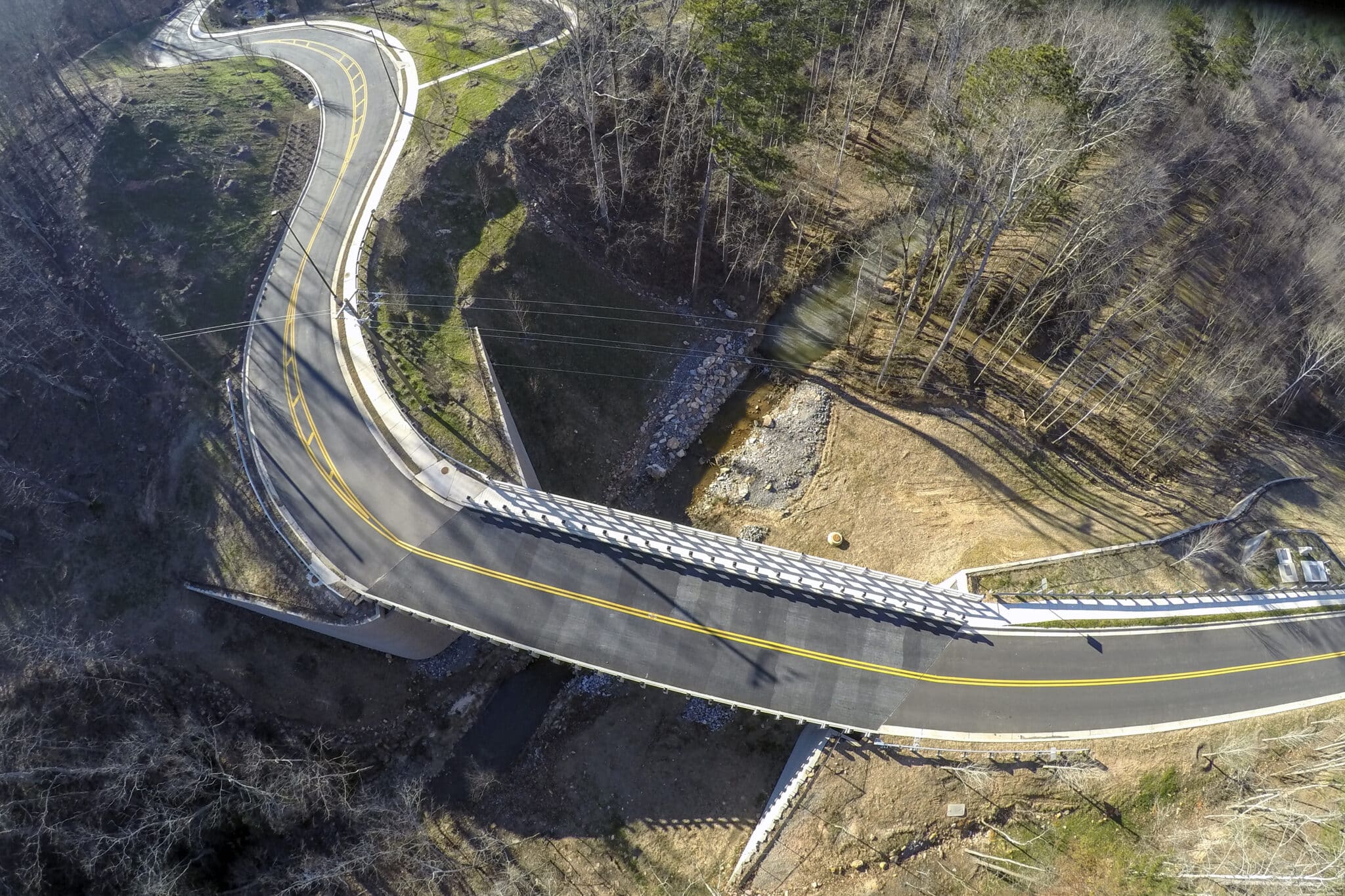
Conclusion and Future of Timber Bridge Solutions
The Inspired Living Timber Vehicular Bridge is a shining example of how innovative engineering and sustainable construction practices can come together to create a functional and beautiful infrastructure solution. York Bridge Concepts and Baxter Construction worked closely to deliver a project that not only met the immediate needs of the community but also provided long-term environmental and aesthetic benefits.
As timber bridge construction continues to evolve, projects like this one highlight the growing potential of timber as a sustainable and cost-effective building material. Timber bridges are not only better for the environment, but they also offer a level of aesthetic appeal and natural integration that other materials simply can’t match.
Looking ahead, it’s clear that timber bridges will play an increasingly important role in future infrastructure projects, particularly in environmentally sensitive areas where sustainability is a key concern. York Bridge Concepts is proud to be at the forefront of this movement, delivering high-quality timber bridge solutions that meet the needs of both clients and the environment.
For more information on this project or to explore how YBC can help you with your next project, please contact us today or read the full case study here.
All Feature Projects
What's Best: A Culvert Or A Timber Bridge?
What Is The Best Span Type For My Project?
Which Load Capacity I Need?
How Do I Cross An Environmentally Sensitive Area?
How Do I Create A Landmark?
How Long Does A Timber Bridge Last?
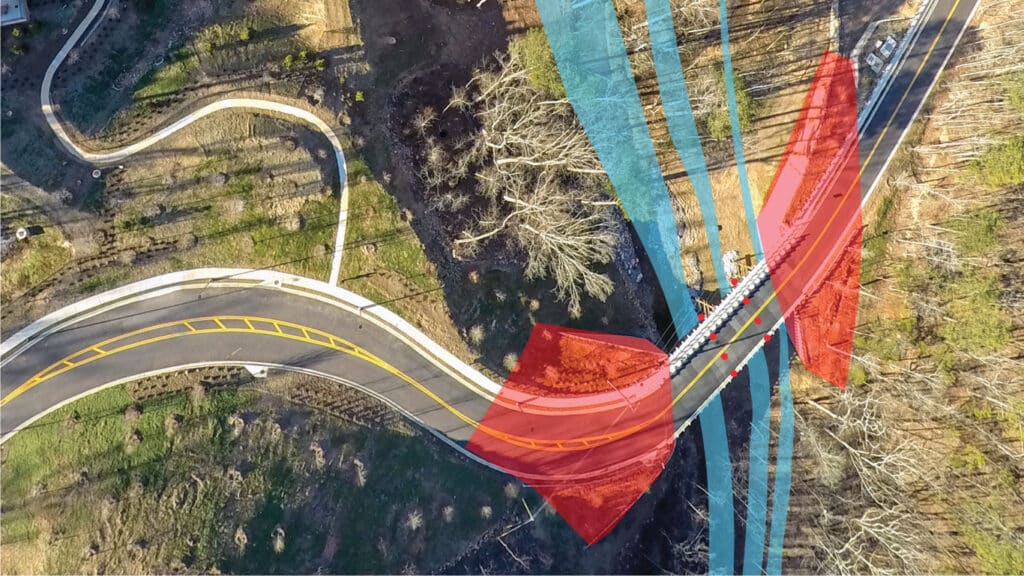
Culvert Or Bridge
If you're considering using a culvert for your crossing project. Click below to understand the best fit for your project.
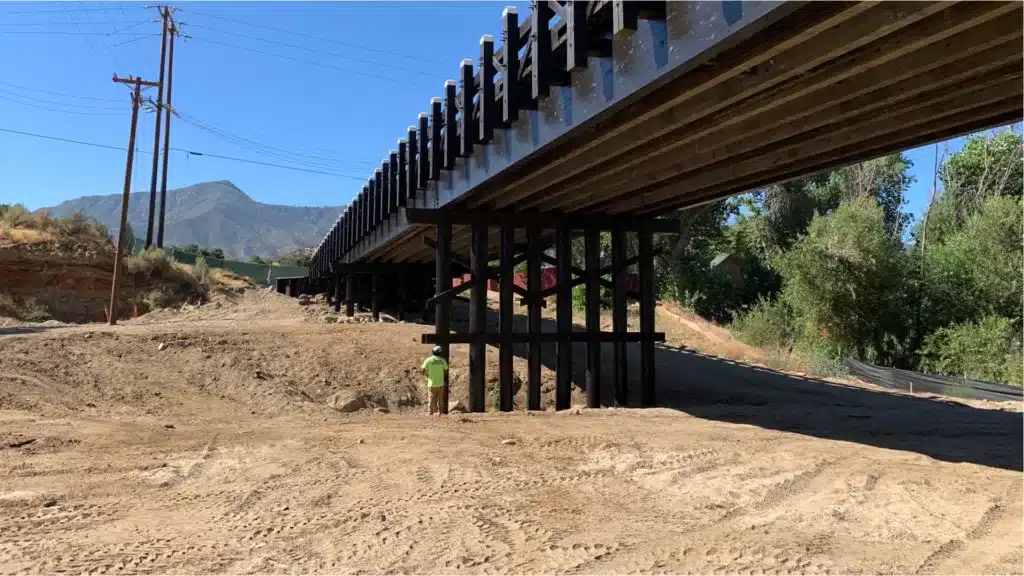
Spanning Solutions
Spanning a crossing is one of the most important aspects of your crossing project. Find the best solution for your crossing needs.
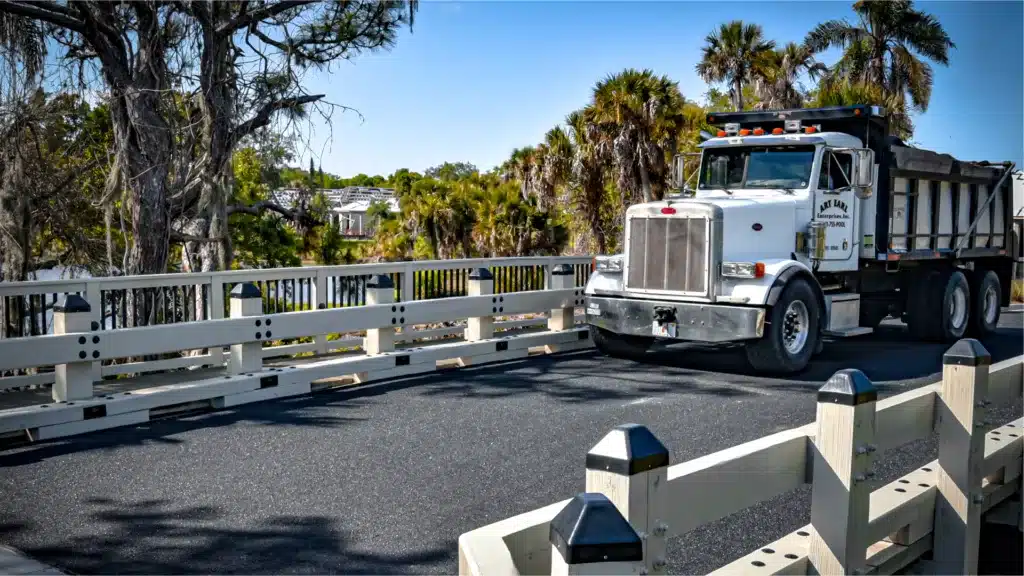
Uses & Capacities
The load capacity of a timber bridge may surprise you. See specs for different loads and uses that will help your decision-making process.

